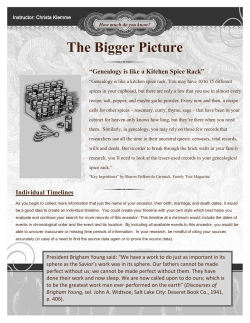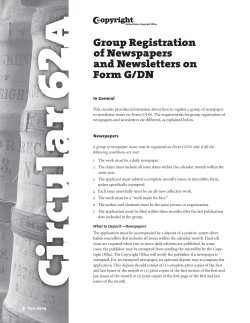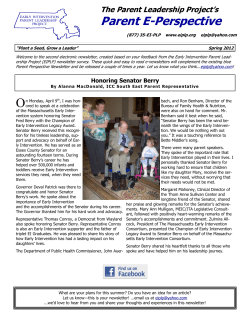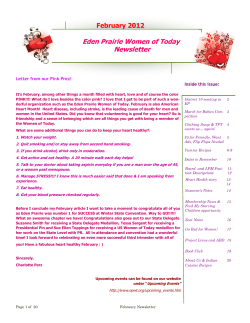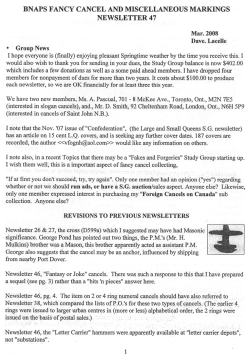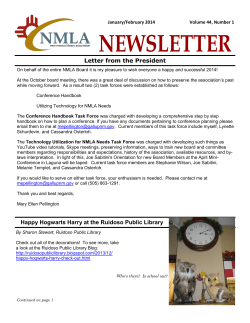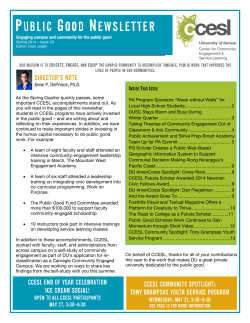
H E A L T H A N D ...
HEALTH AND STRESS T h e Ne w s l e t t e r of The Ameri can In stitut e of S tress January 2007 STRESS SCOOPS TO KEEP YOU AU COURANT & AIS AT THE TOP KEYWORDS: G o o g l e r a n k i n g s , s e a r c h e n g i n e o p t i m i z a t i o n , e x e r c i s e a n d s t r e s s r e d u c t i o n , c e l l p h o n es a n d stress, la u g h ter' s h ea lth b en efi ts, stress r ed u ctio n a n d lo n g evity r ew a rd s o f h a p p y m a rria g es, m a rita l sp a ts a n d si ckn ess, n ew sa liva ry str ess m ea su rem en t, stress a n d a b d o m in a l o b esity, stress red u c tio n lo w ers a n d a n xiety in crea ses ri sk o f recu rr en t h ea rt a t ta ck Our website www.stress.org has enjoyed the #1 ranking for "stress" and "job stress" inquiries on Google and most other major search engines for sev eral years. Being Numero Uno on Google means that the Am erican I nstitut e of St ress is at t he top of a list of some 32 m illion ot her sites competing to attract viewers interested in "st ress." I never really appreciated how important this was until a few years ago, when I learned how numerous companies and indiv iduals made a pretty good liv ing just by increasing the ratings of specific search terms for their clients so they can appear in the top 20 or 30 listings. Google lists ten sites per page and since web surfers usually lose interest after a few pages, this can be crucial if you want to reach a large audience. It's not clear how we were able to achieve, much less maintain, our enviable #1 position for so long since we had no outside help with respect to the design or any other aspect of our site. Others who are knowledgeable about such matters believe it is because we have so much relev ant and up to date content for these specific key words. However, we also have a great deal of authoritative material that is constantly updated: stress and heart disease, stress and obesity, stress and cancer, stress reduction, heart rate variability, etc. – all of which had disappointing ratings. This was particularly puzz ling since a thorough review revealed we obviously had much more comprehensive and superior coverage than many sites that rank ed in the top 20, two or more pages ahead of us. Equally confusing was the fact that although we had the top rank ing for job stress, we could be significantly lower for searches on "occupational stress", "stress at work ", "work place stress" and other synony ms. This was simply because these specific key words did not appear in the tex t. I subsequently learned that rank ings are determined by a complex formula that not only searches for the frequency of such specific terms but also whether and where they appear on the home page, are positioned at the beginning of a paragraph, are in upper case or bolded, etc. Google and possibly other search engines can also determine whether the terms are included in tex t that is appropriate rather than simply being repeated sev eral times in a meaningless fashion solely designed to increase ratings. Indeed, engaging in this or other some other subterfuge could actually back fire and significantly lower the rank ing for that term. How many link s there are to and from other sites are important but Google filters out those from known "link farms" that ex ist January 2007 The Newsletter of THE AMERICAN INSTITUTE OF STRESS Page 2 simply to boost ratings. While you cannot control link s that come from such sites you may also be penalized if you prov ide a link to a site that is obv iously bogus. The criteria for determining ratings varies with different search engines and the priorities for each of these can also change ev ery few week s or months. If you go to Google and ty pe in "How can I increase my Google rating?" (position, listing, page rank ing or something similar), you will instantly receive a list of sev eral million sites as well as sponsored link s to companies, book s and consultants who can prov ide assistance. Howev er, since the criteria and algorithms for determining rankings are constantly changing some adv ice is obsolete and many more will be out of date in the near future. Various vendors each claim to know trick s of the trade that others are unaware of that are guaranteed to increase traffic to your site. These include alerting search engines that their robots need to visit a site promptly to keep up with important new advances or some other secret based on "inside information". It is impossible to keep up with all these changes and pay ing someone else to do it is not lik ely be very cost effectiv e. Consequently , continual monitoring is crucial to assess any changes in status and to achiev e and maintain a high rank ing for the key words you are particularly interested in. Hav ing spent the past 1 2 months doing this, I am conv inced that the most efficient way to insure that key words will rank as high as possible is by constantly adding new material that not only includes these terms but is crafted so that it emphasiz es their importance in a meaningful fashion. The robots or spiders that search engines send out to collect and collate data are becoming increasingly sophisticated and how often a key word appears no longer has the same weight in determining rank ings. Appropriate synonyms are increasingly being factored in since it is clear that many viewers may not select the most appropriate search terms to find ex actly what they are look ing for. The bottom line is that your chances of rising to the top of the rank ings list for any search term is most lik ely to depend on how much content is dev oted to it as well as how comprehensiv e and current this cov erage is. Bearing this in mind, we recently introduced a new serv ice called "Stress Scoops" to prov ide week ly or more frequent summaries of recent adv ances and dev elopments in the field of stress. Most of these will consist of two or three paragraphs with references to assist those who want additional information. There will be occasional longer "Stress Bulletins" that include commentary ex plaining why this contribution could be important or how it differs from prior findings This new feature will help boost our ratings for those k eywords that deserv e this boost by allowing us to focus on topics that need to be emphasiz ed based on feedback from our surv eillance activ ities. Stress Scoops could also improv e our ability to attract sponsors with pertinent products or serv ices. We hav e nev er accepted any advertisements in an effort to maintain our standards for impartiality since such sponsorship might imply an unwarranted endorsement. However, there are some products that we can and should recommend based on scientific studies that could be reported on or referenced in a Stress Scoop if appropriate. Other products may also have merit because of impressiv e anecdotal evidence that consumers need to be informed about. In all instances, sponsors will be clearly identified, any health or other claims must be substantiated and all advertisements must be approv ed to insure that they are compatible with our educational mission and not misleading. These frequent Stress Scoop releases will also provide a rich resource for viewers who want to keep up to date on the latest stress research findings and learn about new products and serv ices. All visitors will be able to see the current Stress Scoop in its entirety as well as the titles and ex cerpts of previous ones but only AIS Members and Fellows hav e access to the complete contents of all Stress Scoops. In addition to the latest addition, visitors may also register to view the entire contents of six prev ious Stress Scoops at no charge to obtain a better idea of what different types look lik e, such as the following ex amples. January 2007 The Newsletter of THE AMERICAN INSTITUTE OF STRESS Page 3 WHY DOES EXERCI SE REDUCE ST RESS A ND HOW MUCH DO YOU NEED? "It's clear that exercise is beneficial for mental health. What's not clear is how it works." according to the Editor-in-Chief of the Harvard Health letter. In one study, researchers reported that clinically depressed adults who participated in regular exercise for three months had an improvement in symptoms similar to what might have been achieved with antidepressant drugs. Other studies have found that higher levels of physical activity are associated with fewer symptoms of depression in children as well as improvement in symptoms of adults with PTSD, panic and other anxiety disorders. Possible explanations are that vigorous exercise can increase levels of endorphins, which are known to provide a sense of well-being and increased resistance to pain. Elite marathoners may experience a feeling of euphoria referred to as the "runner's high" and are often so insensitive to pain that they continue to run on broken bones that would normally bring them to an immediate halt. However, the old adage "no pain, no gain" no longer seems to be valid since many stress reduction rewards can be achieved by walking for 20-30 minutes several times a week or other much milder physical activities that promote a sense of well being. The support provided by others in group exercise activities as well as an improved sense of self–esteem associated with physical activity can also have powerful stress reduction effects. Some people who are depressed or anxious may not have any desire to exercise but should be encouraged to do as much as they can, even if it's just a few minutes at a time. The reason is that this often leads them to increase their activities bit by bit as they experience more benefits. According to the Harvard Mental Health Letter, "You don't have to have a program that includes 45 minutes of sweating and grunting and moaning . . . . A 10-minute walk is as good a place to start as anything else." Rats who were allowed to exercise as much as they wanted to on a free running wheel showed less severe and fewer "fight or flight" responses to a painful stressor compared to litter mates in similar cages with a fixed wheel. The exercise group had lower levels of stress related hormones and reduced sympathetic nervous system responses that may explain these findings. Regular exercise has also been shown to improve cardiovascular and immune system function. References: Harvard Mental Health Letter, December 2005, Bartholomew JB, et al. Effects of Acute Exercise on Mood and Well-Being in Patients with Major Depressive Disorder. Med Sci Sports Exerc. 2005;37:2032-2037. Fleshner M. Physical Activity Reduces the Negative Effects of Stress on Behavior, Neural, Endocrine and Immune Responses: Med Sci Sports Exerc. May, 2005; 37(5),. Supplement:S134 Health And Stress Newsletter #1, #12, 1994 and # 4, 2005. ARE CELL PHONES INCRE ASING STRESS LEVEL S? One might think that having a cell phone would tend to reduce stress by making it easier to quickly contact someone in an emergency and providing a sense of safety and control. However, a recent study suggests otherwise. A sociology professor who followed more than 1300 people found that those who regularly used cell phones or pagers "experienced an increase in psychological distress and a decrease in family satisfaction" compared to controls who used these devices less often. No increase in psychological stress was seen in others who regularly used e-mails to communicate. January 2007 The Newsletter of THE AMERICAN INSTITUTE OF STRESS Page 4 The study also looked at "spillover" -- the seepage of job stress problems into home life, and vice versa. Increased cell phone use was associated with a greater likelihood for job stress to adversely affect family relationships for both men and women. Female cell phone users got a "double-whammy" since they were much more apt to report home and family concerns that spilled over into work. While it's dangerous to draw general conclusions from one study, others also feel that cell phones and pagers are somehow increasing psychological stress and decreasing family satisfaction for many individuals. One reason may be that, although cell phones may make people more accessible wherever they are, this may not be desirable for unwanted calls when you are on vacation or busy at work. In addition, as use of cell phones and pagers becomes increasingly prevalent, the line between family and work life can continue to blur. The professor suggests that consumers might want to evaluate the pros and cons, if cell phones are "making your family better, even if it's stressing you out . . . . Then, maybe it's OK. Or maybe you should take stock: How much of this information that I'm getting from this technology is making my life easier? If the answer is, 'Not a lot,' maybe it's time to shut things down." Reference: Chesley, N. Journal of Marriage and Family 2005; 67:1237-1248. LAU GHTER LOWERS STRES S, HEL PS YOU R HEAR T, LEN GTHENS LIFE AND PRO VIDES OTHER PERKS The stress reduction and health rewards of laughter have long been recognized. The Bible tells us "A merry heart doeth good like a medicine" (Proverbs 17:22) and laughter might also be the best medicine for your heart according to a recent study. Researchers randomly assigned 20 non-smoking, healthy men and women to view a 15–30 minute segment of a movie designed to induce mental stress and another that made most people laugh. Numerous measurements of arterial blood flow using an ultrasound technique were made prior to and for an hoiur following the viewing of each film. Blood flow was restricted in 14 of 20 subjects after the stressful film but increased in 19 of 20 after the film that made them laugh. The average difference between these two responses was January 2007 The Newsletter of THE AMERICAN INSTITUTE OF STRESS Page 5 greater than 50 percent. The reduction in blood flow after the sad film was equivalent to doing mental arithmetic under time pressure while the increase following the funny film was similar to that seen with aerobic exercise. Arterial tone is regulated by the endothelial cells that line the inner walls of these vessels. It has long been known that anger, hostility, anxiety, depression and other stressors cause vasoconstriction, which may partially explain why they increase risk for heart disease. This study suggests that laughter could have the opposite effect. The same research group had previously given 150 patients with coronary disease and 150 healthy age-matched controls a questionnaire designed to determine their sense of humor and whether they would react to absurd situations with either laughter or irritation. The results revealed that the heart disease patients were 40 percent less likely to see such situations as funny. As emphasized in a recent Newsletter, laughter is the shock absorber that softens the blows of and blunts the harmful effects of stress on health and life. As also noted in prior Newsletters, "He who laughs, lasts", and "You don't stop laughing because you grow old, you grow old because you stop laughing." Laughing may promote longevity not only because it helps to prevent cardiovascular disease and diabetes, but also because it improves immune system function, lowers blood pressure and stress hormone levels. Numerous other studies also show that optimistic, happy people with a good sense of humor live longer than their grouchy counterparts. References: Miller M, Mangano C, Park et al. Impact of cinematic viewing on endothelial function. Heart 2006; 92: 261-262. Why Do Happy People And Optimists Live Longer? Health And Stress Newsletter. July, 2005. Can Laughter & Humor Help You Live Longer? Health And Stress Newsletter. November, 2005. A H A P P Y M A R R I A GE R E DU C E S S T R E S S A N D P R O M O T E S H E A L T H A N D L O N GE V I T Y As noted in prior Newsletters, the Harvard Study of Adult Development is the longest and most comprehensive investigation of the aging process ever conducted. Since the 1930's, researchers have closely followed more than 800 men and women from adolescence to old age to seek clues about behaviors and activities that are associated with healthy longevity. Some of the findings surprised George Vaillant, the current director of this project and author of Aging Well. He had anticipated that "the longevity of your parents, the quality of your childhood and cholesterol levels would be very influential". They were not. Keeping mentally active and having lots of friends were much more important. A happy marriage or good long term relationship at age 50 was a leading indicator of being healthy at age 80 but a low cholesterol level had very little significance. How can such findings be explained? With respect to cholesterol, Newsletter subscribers are already aware of mounting evidence that elevated cholesterol, like premature baldness and a deep earlobe crease, may be associated with a higher incidence of heart attacks, but does not cause them. Similarly, the cardioprotective benefits of statins are not due to cholesterol lowering since they are also seen in patients with low LDL and cholesterol. It is much more likely, that, like low dose aspirin, reduction of inflammation and other activities are January 2007 The Newsletter of THE AMERICAN INSTITUTE OF STRESS Page 6 responsible. In addition, numerous studies show that cholesterol lowering is of little value in reducing mortality in senior citizens and that a low cholesterol is actually associated with increased death rates and numerous health problems. But why would a happy marriage or having lots of friends promote healthy aging? The most likely explanation is that stress can accelerate the aging process and that having strong social support from friends or family reduces the harmful effects of stress. Stress can contribute to illness and premature mortality in many ways, including suppression of the immune system's ability to ward off infections and certain cancers. British researchers recently reported that in a study of more than 180 senior citizens who received influenza vaccine, those who said they were happily married developed higher antibodies and more protection than others who reported less marital satisfaction. Participants also completed quetionnaires designed to rate exposure to stressful life events and those who had experienced a significant bereavement in past 12 months had poorer antibody responses than controls. A happy marriage or long term relationship also provides strong emotional support, which is a powerful stress buster. References: Vaillant GE. AGING WELL: Surprising Guideposts to a Happier Life from the Landmark Harvard Study of Adult Development. Little, Brown and Co. New York, 2002. Health And Stress Newsletter, #5, #7 2005, #10 2002, #7 2000, #9 1999. WHY THE S TRESS OF SPA TS WIT H YOUR SPOUS E CAN MAKE YOU SIC K AND SHORT EN YOU R LIFE As noted in a recent Stress Scoop, happily married couples are healthier and live longer, possibly because they have less stress. Numerous studies show that increased stress is associated with impaired immune system function that reduces resistance to disease. Medical students who were severely stressed because of concerns about an impending final exam had lower than normal antibody responses to Hepatitis-B vaccine. A similar poor response to influenza vaccine compared to matched controls was seen in those caring for a spouse with Alzheimer's. Another study showed that such caregivers took about 9 days longer than controls to completely heal a small biopsy wound because of poor immune responses. They also had higher levels of Interleukin-6, which disrupts immune system function and increases risk for heart disease, arthritis, osteoporosis, Type-2 diabetes and possibly certain malignancies. These changes can persist up to three years after care giving activities cease. There is little doubt that having to provide constant care to a spouse suffering from Alzheimer's can cause severe stress that impairs wound healing and increases susceptibility to disease. Howev er, a recent study showed that even if spouses usually get along well, the stress caused by a brief argum ent can slow healing of a surgical wound by as much as a day. Researchers admitted 42 couples who had been married on average for 12.5 years for two 24-hour visits, separated by two months. At each visit, all participants were subjected to a suction blister dev ice that produced eight identical tiny wounds. During the first visit, all couples completed questionnaires designed to measure stress levels and then engaged in two 10-minute discussions during which they either requested or provided social support. The procedure was the same during the second visit ex cept that the discussions were about areas of disagreement designed to produce emotional and sometimes hostile responses. Couples who were classified as "high hostile" took a day longer to heal than others not only after the conflict visit (7 days versus 6) but also after the social support encounter (6 versus 5). Measurements of specific immune sy stem components showed differences in the delayed healing group that could explain these results. January 2007 The Newsletter of THE AMERICAN INSTITUTE OF STRESS Page 7 I f a short spat in a lab can have such effects, one can only wonder what t he response would be t o a fullfledged fight at hom e last ing hours or days. The Honey mooner's Ralph Kramden was probably luck y that he never needed emergency surgery since frequent fights could significantly delay wound healing and reduce resistance to infection. References: Kiecolt-Glaser JK et al. Hostile Marital Interactions, Proinflammatory Cytokine Production, and Wound Healing. Arch Gen Psychiatry. 2005;62:1377-1384. BBC News Online 11/08/2005. Health And Stress Newsletter #7 1999 A N EW SAL IVA TE ST TO MEASUR E STRE SS Japanese researchers have developed a rapid and relatively inexpensive way to determine stress levels by what the media have referred to as a "spit test". This label is not as derogatory as it might seem because this method has a more scientific basis than stress dots, stress meters and other devices described in a recent Newsletter devoted to this subject. These merely detect alterations in blood flow or sweat gland activity due to stimulation of the sympathetic nervous system and the secretion of adrenalin and similar catecholamine hormones. In addition, fingertip temperatures or galvanic skin responses used to assess these changes can be influenced by many factors other than stress. Measuring blood levels of these and other stress-related hormones is much more accurate but not practical or convenient because blood tests are expensive and can be difficult to obtain. Determining salivary concentrations of some of these hormones seems to be a very satisfactory alternative that has been used by researchers for over two decades since there is a close correlation with blood test results. This non-invasive approach also avoids the stress often associated with obtaining blood that can affect the results. Kits, such as the one on the left, are readily available that instruct consumers how to collect saliva and mail it to a laboratory for testing. The cost is under $60.00 and an analysis of the results is returned in less than a week. DHEA levels start to steadily decline after age 25 so the results have to be corrected for age. Some laboratories also measure salivary concentrations of male and female hormones as an indicator of biological aging since these can drop up to 8090% from youthful peaks. However, these salivary measurements do not correlate as well with their blood levels compared to cortisol and DHEA Cortisol and DHEA (dehydroepiandrosterone), are the steroid hormones that are most affected by stress and measuring their concentrations in saliva has become a particularly popular way to determine stress levels. Cortisol is increased and DHEA is greatly reduced during stress and seem to balance one another since they have opposite effects on protein, carbohydrate and fat metabolism, immune system function and blood pressure. The secretion of these steroid hormones is regulated by the hypothalamic-pituitary-adrenal axis rather than stimulation of the sympathetic nervous system and the secretion of catecholamine hormones that produce "fight or flight" responses. Catecholamines are protein hormones that are very difficult to measure accurately in saliva in contrast to steroids like cortisol and DHEA. This January 2007 The Newsletter of THE AMERICAN INSTITUTE OF STRESS Page 8 obstacle has been overcome by determining the concentration of a chemical called alphaamylase that is produced in response to sympathetic stimulation of the salivary glands. These results correlate with blood catecholamine levels and can be used as a substitute since the degree to which they rise during stress corresponds very well with the increase in blood levels of catecholamines but not cortisol. This makes it feasible to assess both aspects of hormonal responses to stress by measuring cortisol, DHEA and alpha-amylase concentrations from the same saliva specimen. Some companies like Salimetrics provide assay kits to do this for research studies only. Collection is complicated and requires abstaining from cigarettes, coffee and other beverages containing caffeine, duration of time from your last meal must be noted, calibrated pipettes are needed and all specimens must be kept frozen prior to submission. In addition, these test kits are fairly expensive and are not likely to appeal to most consumers. Japanese researchers have recently developed a method to measure salivary alpha-amylase that is much more convenient and much less costly. The Cocoro Meter is a hand held device weighing about a quarter of a pound that comes in four colors, sells for around $165 and comes with 20 strips. Packs of 20 strips are under $20 so that each additional test costs less than a dollar. As illustrated below, the strip is moistened with some saliva and inserted into the device, which displays the results in less than a minute as one of four levels of stress. While not as accurate as blood tests, this approach seems much superior to stress dots, GSR devices and similar products that claim to measure sympathetic nervous system responses to stress. Nipro, a Japanese medical supply company offers the Cocoro Meter to measure stress based on salivary alpha-amy lase levels. You simply moisten a special strip with some saliva and put it into the machine. Results are display ed as numbers accompanied by stick figure icons portray ing four different levels of stress. This happy and smiling young lady registered a relaxed reading of 20. An obviously very harried and tense executive had a score of 80 that was four times higher. Reference: www.japantoday.com/e/?content=product&id=977&page=2 STR ESS, C ORTISO L AND ABDOMI NAL FA T Hundreds of millions of dollars have been spent on worthless supplements that claim to promote weight loss by reducing stress and/or cortisol. Consumers can be easily confused since advertisements cite reliable references that confirm and explain how increased stress or cortisol can increase abdominal fat deposits. For example, Cushing's syndrome is characterized by a persistent increase in cortisol levels and abdominal obesity. But when the cause of the elevated cortisol is removed, the excess abdominal fat deposits also disappear. Chronically stressed primates that have increased cortisol also develop abdominal obesity and laboratory studies confirm a clear correlation between cortisol levels and the deposition of deep abdominal fat. A study of stressed out middle-aged Swedish men similarly showed that those with the highest cortisol levels also had the biggest beer bellies. Stress can also contribute to "middle aged spread" because many such individuals find that chocolates, cookies candies, chips and other high fat, high carbohydrate foods relieve their anxiety. Male and female hormones normally protect against the deposition of abdominal fat but their levels start to decline after age 40. Most incoming college freshman put on extra pounds their first year, and as noted in prior Newsletters, this so-called "Freshman 15" is also due to stress. One study showed that a sample of university women gained weight 36 times January 2007 The Newsletter of THE AMERICAN INSTITUTE OF STRESS Page 9 faster than aged matched controls that did not attend college. In addition to being unsightly, stress induced abdominal fat secretes large amounts of inflammatory molecules that contribute to diabetes, insulin resistance and heart attacks. How many extra pounds you are carrying around may not be as important as where that excess weight is located. People with apple shaped figures are more susceptible to these disorders as well as certain cancers compared to those with pear shapes who are just as overweight due to fatty hips and buttocks. In fact, there is good evidence that increased fat in these locations may be associated with a decreased risk for coronary disease and atherosclerosis. Since abdominal fat also tends to increase cortisol levels, this can lead to a vicious and unhealthy cycle, especially in women. There is little doubt that increased stress and/or cortisol can cause increased abdominal fat and weight gain. However, there is absolutely no proof that any nutritional supplement reduces stress, cortisol or the deposition of abdominal fat. The problem is that consumers are confused because studies in respected medical journals such as those noted below are often cited to provide scientific support, even though they have nothing to do with these products. References: Health and Stress Newsletter #6 2000, # 5 2003, #5 2004. Eppel ES. McEwen B, Seeman T, et al. Stress and Body Shape: Stress-Induced Cortisol Secretion Is Consistently Greater Among Women With Central Fat. Psychosom Med, 2000;62:623-632. Yong Q. Takahashi N. Hileman SM, et al. Adiponectin Acts in the Brain to Decrease Body Weight. Nat Med 2004; 10(5):524-529. DOES STRESS REDUCTION BENEFIT PATIENTS AT HIGH RISK FOR HEART ATTACKS? Several studies have confirmed the cardioprotective benefits of stress reduction in patients at increased risk for future coronary events. The Congressional Prevention Coalition on Stress Prevention reported that cardiac patients who learn to manage stress reduce their risk of having another heart attack or heart problem by 74%, suggesting that stress management is even more effective than exercise in preventing recurrent heart disease. In one study, researchers took 107 patients with coronary heart disease and put them on either a four-month stress reduction program, a four-month exercise regimen or allowed them to receive usual heart care from their personal physicians. Over the next five years, only three of the 33 people given stress management suffered cardiac events, defined as a heart attack or heart surgery such as a bypass or angioplasty. Seven of 34 people in the exercise group suffered such events, as did 12 of the 40 patients receiving typical care. Those in the stress management program were 74 percent less likely to have additional heart problems than those who received only routine medical care. Stress management training consisted of 16 small-group weekly sessions that provided participants with ways to control negative emotions and thoughts and other stress reduction techniques. Patients who received stress management training had lower hospitalization and physician's bills with average costs $5,998 compared to $10,338 for those who received usual care. These findings are of particular interest since none of the patients entered the study "complaining of stress", suggesting that any patient with heart disease can benefit from stress reduction. Ironically, only about 10 to 20 percent of heart patients even wind up in rehabilitation programs since, although it has proven to be cost effective, insurance is often an issue. Doctors also say it is surprisingly hard to convince patients that they've got a stress problem, even after they have had a heart attack. January 2007 The Newsletter of THE AMERICAN INSTITUTE OF STRESS Page 10 References: Hagelin J. "Stress Prevention: Its Impact on Health and Medical Savings", The Congressional Prevention Coalition on Stress Prevention. June 24, 1998. Blumenthal JA, Babyak M, Wei J et al. Usefulness of psychosocial treatment of mental stress-induced myocardial ischemia in men. American Journal of Cardiology January 15, 2002;89:164-168, Vogel JHK, Bolling SF, Costello RB et al. Integrating Complementary Medicine Into Cardiovascular Medicine J Am Coll Cardiol 2005; 46:184-221. ANXIETY I NCREAS ES RIS K FOR RECURRENT CORONARY COMPL ICATIONS German researchers report that heart attack patients who have high levels of anxiety are at increased risk for subsequent coronary events including heart attacks and death. Physical examinations and psychosocial assessments were conducted on 76 patients one week and 31 months after a myocardial infarction. During this period, 24 patients required some type of revascular procedure or suffered a cardiovascular death. A review of the records revealed that this group had significantly higher anxiety levels than control patients who did not experience these complications. In addition, the higher the level of anxiety the earlier complications tended to occur during the convalescent period. Conversely, low anxiety levels were much more common in patients who had no further coronary symptoms (77% vs. 54%). Several studies have shown that hostility, depression and lack of social support are risk factors for poor prognosis following a heart attack but few studies have examined the role of anxiety. It had previously been suggested that anxiety might actually have a favorable influence by encouraging the adoption of a healthier lifesty le. However, this study reported, "Anxious patients tended to continue smok ing, whereas less anxious patients were more lik ely to giv e up smoking during the follow-up period." In addition to high anxiety levels, being female, elderly, living without a partner or having diabetes at the onset of the study were also associated with an increased risk of a recurrent coronary event. Reference: Benninghovena D, Kadkub A, et al. Influence of Anxiety on the Course of Heart Disease after Acute Myocardial Infarction - Risk Factor or Protective Function? Psychotherapy and Psychosomatics 2006; 75: 56-61. It is our hope that as this library of Stress Scoops and Bulletins grows, it may encourage viewers to sign up for Membership, which also provides a subscription to our monthly Newsletter and other benefits. Many Stress Scoops reference previous issues of Health and Stress, which may also help to increase Newsletter subscriptions. It has been suggested that we invite viewers to submit their own Stress Scoops or provide a blog where comments could be posted that disagree or provide additional information on a particular topic. Such a possibility might be considered in the future but our top priority at present is to make certain that everything appearing on our site is not only accurate, but presented in an unbiased, objective fashion. Stay tuned for more! Copyright©2007 by the American Institute of Stress. All rights reserved. Health and Stress The Newsletter of The American Institute of Stress 124 Park Avenue Yonkers, NY 10703 ANNUAL SUBSCRIPTION RATE: E-Mail.............................$25.00 ISSN # 1089-148X Paul J. Rosch, M.D., F.A.C.P. Editor-in-Chief www.stress.org
© Copyright 2025



